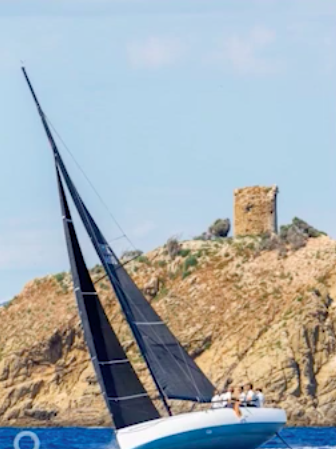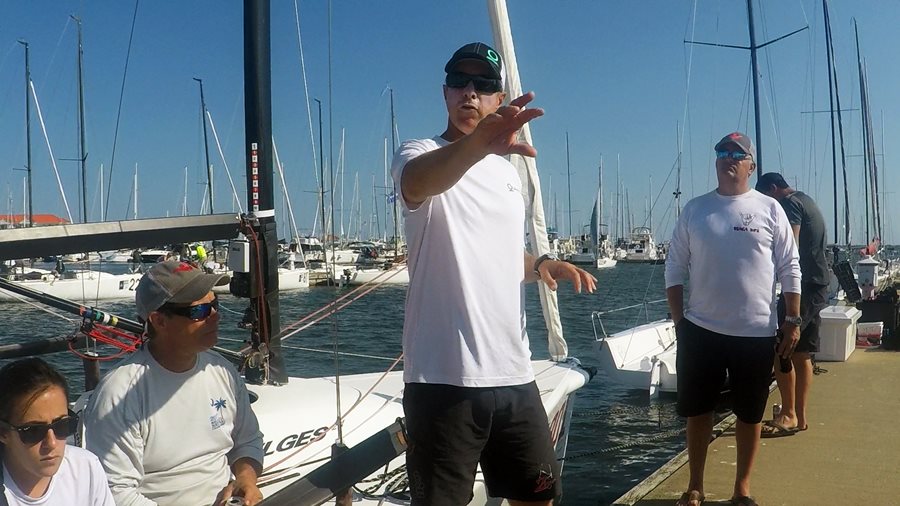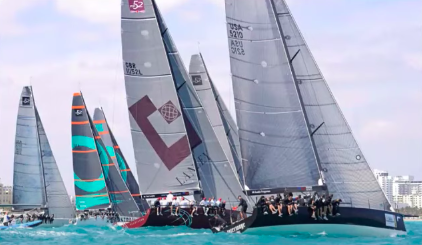In preparation for the 2016 Melges 24 Worlds in Miami, reigning champion and Melges 24 class expert Chris Rast and Quantum's Scott Nixon walk us through how to master the most common problems that teams face at major regattas. While some of this content is class and event specific, much of the information is applicable to any major regatta. Below are Scott and Chris' notes. Let us know if you have any questions or if there is anything we can do to help you conquer the Worlds!
1. BOAT AND TEAM PREP
Regattas are won before they even start. Try to show up as prepared as possible. Mental shape and physical shape. There are multiple long legs so lots of hard hiking and stamina needed. In a prefect Worlds your team would have done a few events together to get used to sailing as a team and unit. If not possible, utilize your time before the event in Miami to get on the water and train as much as possible. Sail with other teams that are faster than you so you can learn quickly and try to get up to speed with the better teams. Take a break right before the Worlds starts on Tuesday so you have energy for the long five day event.
Boat prep is simple late in the game. Show up with a clean bottom and foils. A light wet sand with #400 on the bulb is good after a long trailer to the event to take out small scratches. McLube Hull Coat or your preferred polish is good for the entire hull. I do not like to polish the foils as this only aids in faster stall on windy days with high speeds and wipeout potential. Mast should be clean and polished.
Acetone the shrouds to get road grime off. Make sure you clean your bottom every morning on race days. Miami water is warm and growth happens fast. Make sure your engine is working well as their will be a fair amount of motoring in South Beach.
2. STARTS & MAKING GAINS
Starting is a PROCESS and big fleet starting is much harder than smaller fleets and lines. You need to do things early to make sure you are ready for the race. Ping the ends and mid line boats with your PROSTART. It takes a while to sail the line on a 70 boat starting line so do this early and often. Check current. Sail the line and check line bias. Could be different on both sides of the midline boat. Do a few practice starts to work on timing, acceleration, and getting a feel for the line and important first shift off the line. Starting at an end is risky, but has high rewards! Middle of the line is safe and where you will see most top teams. Need to get rid of mid line sag to get off clean and in front row. Goal is to sail straight for 5 minutes without tacking.
Besides starting leeward gates are the only other real option to gain (or lose) big points. Set up you rounding early. If you gybe early you are probably set up to do a left gate left turn. If you go straight and come in late after one gybe you are normally better off going to the right gate. Downwind you must sail in clear air; work on this first and then work on your clear approach to the gates. Get to the lay lines early when ahead and stay off of them if you are in the pack and behind. This will give you options to gybe and switch gates if needed.
End goal is to round a clean gate and be able to sail straight without tacking. This is easier said than done. Try not to round two feet behind a boat but rather one length or more back bow to rudder. This will help give you space to go straight. If you are forced to tack in the first two minutes after a gate rounding it is very hard to pass boats on the next beat.
Work on wide and tight roundings to execute this
3. MARK ROUNDINGS & SETS
Mark roundings are opportunities to pass boats and set up the next leg to defend or attack the leaders. Try to avoid the high risk move of tacking inside the three length windward mark zone on the first rounding. A wise coach once told me to approach from eight to ten lengths in a big fleet when coming in from the left on the port tack lay line. Be safe so you don’t have to spin a 720. Duck that one boat. Try not to round overlapped so you have options.
Sailing to the offset is a place where you can gain if you work hard. Hike so the boat is very fast and flat when reaching. Ease vang, backstay and sheets to build and maintain speed.
At the offset you need to have a plan to do a normal VMG rounding, a high set (to protect the high lane) or a gybe-set (head for the left side looking downwind). This will set up your run to the leeward gates. Think about the cleanest exit at the leeward gates very early on the run so you can set up your approach in the big fleet where lanes are critical.
4. UNPREDICTABLE CONDITIONS AND BIG WAVE SAILING
Miami conditions for late Nov/early Dec are normally very nice, but you can normally get a least one cold front in a five day period. This means the normal SW’ly winds will go to the NW as the front goes over the Miami area. After the front passes the winds will be in the NW to NE directions for a few days. After this the cycle starts over with the winds out of the Easterly areas. The Worlds normally would see most of the racing days in an Easterly (NE to SE).
All this means is that this event should see a wide variety of conditions with flat water, light air to big waves and potential high winds. Be prepared for all and have a forgiving set up and sail program to get through all the ranges.
The SE’ly is normally warm with a 135 degree angle for cumulus / sea breeze conditions.
Any days that are sailed in the W’ly to the N’ly will be influenced by the land since the shoreline is NNE to SSW. This means flatter water and shifty sailing. Shifts are influenced by passing clouds and accelerated breeze right off the beach. Be ready for lots of tacks and gybes with fast shifts. Flat water sailing with tight leeches is normally key.
The easterly is steady with small oscillations. Speed and clear air are key here. Sea state can build up quickly if the E’y last as few days and the tide is ebbing out of the cuts.
We had the 2014 M32 Worlds in Miami in early December and it blew from the NE for almost the entire event. The seas state was large but manageable with waves in the three to six foot range. Winds were 15-22 knots and oscillating so boat speed was key as well as getting solid starts where you could sail straight.
If a quick front passes south of Florida it can blow hard for one or two days and this is where the waves can get big!
The goal is big wind and waves is to be safe and reduce the wipeouts. This means sailing with your Reacher (Q A2.5) class spinnaker so you can steer easily and get the bow up and down the larger waves. Crew weight aft and active pumping on the spinnaker sheet to promote surfing and staying on the longer swells. Spinnaker down early so you have time at the gates to go upwind cleanly. Don’t rush your sets and douses. More important to be smooth and catch the big waves.
5. PACING YOURSELF
Between the training days, weigh in and then five days of open ocean racing, the Worlds is a long event. Save yourself and your team early. Make sure Niki Beach and the Miami nightlife does not wipe you out early in the week!
Try to get at least a half day off on Monday before starting the Tuesday day one racing. Take it easy when off the water. Hydrate, eat well and avoid the sun when possible. Use lots of sunscreen and protective clothing. This will help conserve and store energy.
The beats will be long and hiking is key in winds over 12 knots so stay ready for this. Hike hard, sail hard and recharge when you are off the water. Relax and do some fun activities to take your mind off all the efforts that sailing requires at a big event.
Watch the weather and make sure you have the proper gear. Even though the water is warm when it blows 20 knots you will get wet and can cramp up after a few long races.
Before the event remember to research the possible weather, tides of Miami Beach (Government Cut and Bear Cut) and know the Sailing Instructions. This will give you a nice comfort level when starting the big event. Have fun and enjoy.

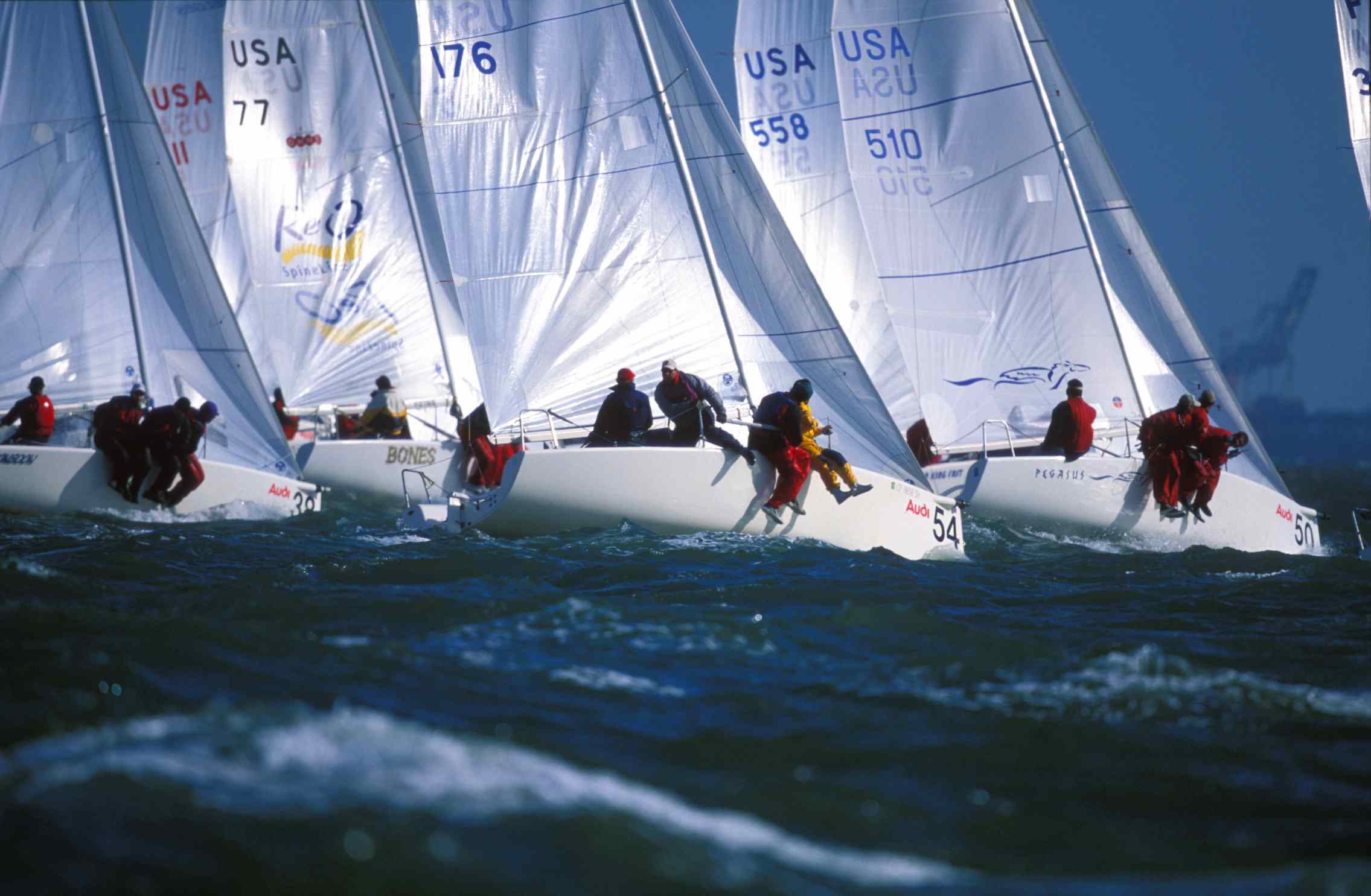
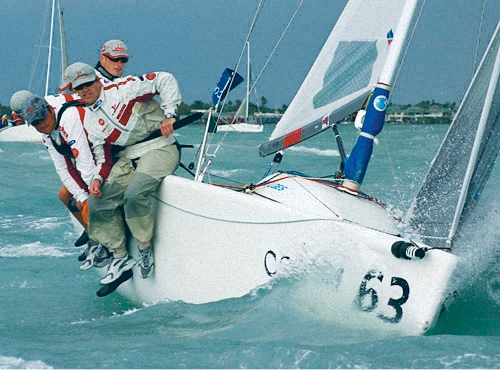 Audio (6 minutes) and text: James Spithill is best known as Oracle Team USA's winning skipper in the America's Cup and for his prowess on the match racing scene, but he's a pretty mean fleet racer too, having won the Melges 24 Worlds for example. In this interview the Australian professional looks at how to fight you way through the pack, and why it's the cool cats that win out in the end...
Audio (6 minutes) and text: James Spithill is best known as Oracle Team USA's winning skipper in the America's Cup and for his prowess on the match racing scene, but he's a pretty mean fleet racer too, having won the Melges 24 Worlds for example. In this interview the Australian professional looks at how to fight you way through the pack, and why it's the cool cats that win out in the end...